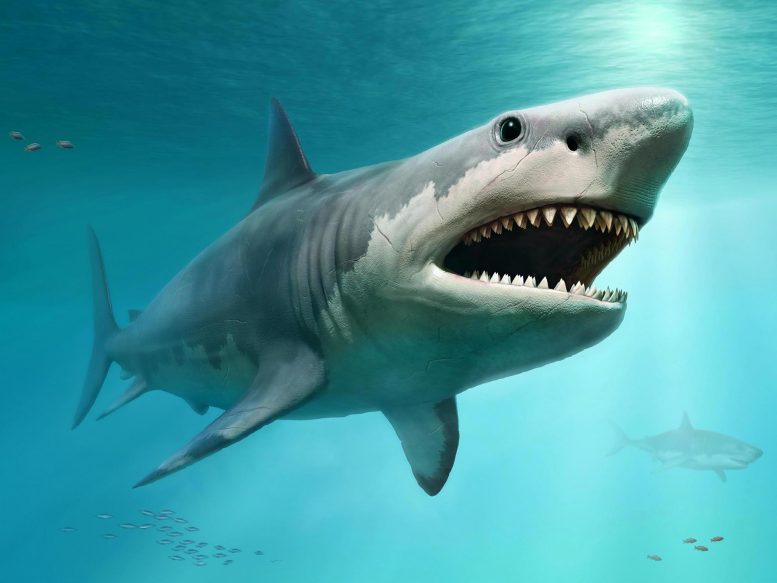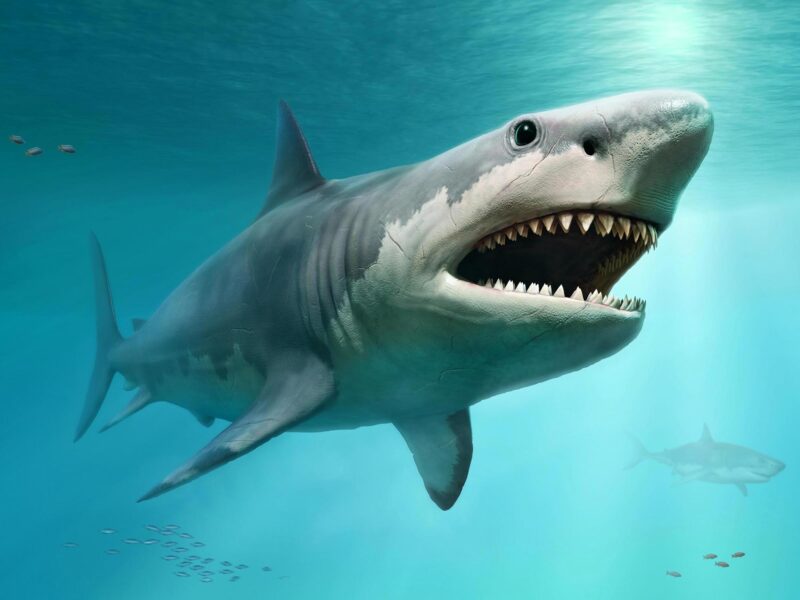
Illustration d’artiste du Megalodon. Cependant, de nouvelles recherches scientifiques montrent que personne ne sait à quoi ressemblait réellement le Megalodon.
La dernière étude révèle que personne ne sait encore à quoi ressemblait réellement le Megalodon. Des chercheurs de l’Université DePaul spécialisés dans les requins affirment que ce mystère fait de la paléontologie un domaine scientifique passionnant.
Une nouvelle étude scientifique montre que toutes les formes corporelles précédemment proposées du gigantesque Megalodon, ou requin mégatoïde, qui vivait presque partout dans le monde il y a environ 15 à 3,6 millions d’années, restent du domaine des spéculations.
“L’étude peut sembler être un pas en arrière dans la science, mais la persistance du mystère fait de la paléontologie, l’étude de la vie préhistorique, un domaine scientifique fascinant et passionnant”, a déclaré Kenshu Shimada, professeur de paléobiologie à l’université DePaul et coauteur de l’étude. Cette dernière recherche éclaire la réalité sur la compréhension actuelle de la forme du corps du Megalodon (officiellement appelé Otodus megalodon) est publiée dans la revue internationale Biologie historique.
Otodus megalodon est typiquement dépeint comme un requin monstrueux et surdimensionné dans les romans et les films tels que le film de science-fiction de 2018 “The Meg”. Des études antérieures suggèrent que le requin a probablement atteint des longueurs d’au moins 50 pieds (15 mètres) et peut-être même 65 pieds (20 mètres).
” Cette nouvelle étude montre qu’il n’existe actuellement aucun moyen scientifique de soutenir ou de réfuter la accuracy of any of the previously published body forms of O. megalodon,” noted lead author Phillip Sternes, who graduated from DePaul in 2019 and is currently a Ph.D. candidate at the University of California, Riverside. Shimada mentored Sternes in his DePaul lab in Chicago, and the new study additionally includes Shimada’s current graduate student, Jake Wood, as coauthor.

Paleobiologist Kenshu Shimada (DePaul University, Chicago) holds a tooth of an extinct shark Otodus megalodon, or the so-called “Meg” or megatooth shark. (DePaul University/Jeff Carrion). Credit: DePaul University/Jeff Carrion
Otodus megalodon is known only from its teeth and vertebrae in the fossil record, and traditionally the modern great white shark (Carcharodon carcharias) was used as a model for the body form of O. megalodon. Carcharodon carcharias belongs to the shark family Lamnidae, or lamnids, also including the mako, porbeagle, and salmon sharks, and they are regionally endothermic (partially warm-blooded), allowing them to be active predators. Otodus megalodon is not a lamnid shark, but it was previously inferred to also have been regionally endothermic. Based on the inference, yet another previous study used two-dimensional geometric shape analyses on the body forms of modern lamnids to propose an inferred body form of O. megalodon.
The new study by Sternes, Wood and Shimada examined whether such a two-dimensional approach can actually differentiate the body forms represented by modern endothermic (warm-blooded) species from those of modern ectothermic (cold-blooded) ones within the shark order called Lamniformes, which also includes Otodus megalodon. The study strongly indicates that, two-dimensionally, there is no relationship between thermophysiology and body form in lamniforms. “Although it is still possible that O. megalodon could have resembled the modern great white shark or lamnids, our results suggest that the two-dimensional approach does not necessarily decisively allow the body form reconstruction for O. megalodon,” Wood said.
“All previously proposed body forms of Otodus megalodon should be regarded as speculations from the scientific standpoint,” Sternes said. “Any meaningful discussion about the body form of O. megalodon would require the discovery of at least one complete, or nearly complete, skeleton of the species in the fossil record,” added Wood. “The fact that we still don’t know exactly how O. megalodon looked keeps our imagination going,” Shimada said. “This is exactly why the science of paleontology continues to be an exciting academic field. We’ll continue looking for more clues in the fossil record.”
Reference: “Body forms of extant lamniform sharks (Elasmobranchii: Lamniformes), and comments on the morphology of the extinct megatooth shark, Otodus megalodon, and the evolution of lamniform thermophysiology” 6 February 2022, Historical Biology.
DOI: 10.1080/08912963.2021.2025228



